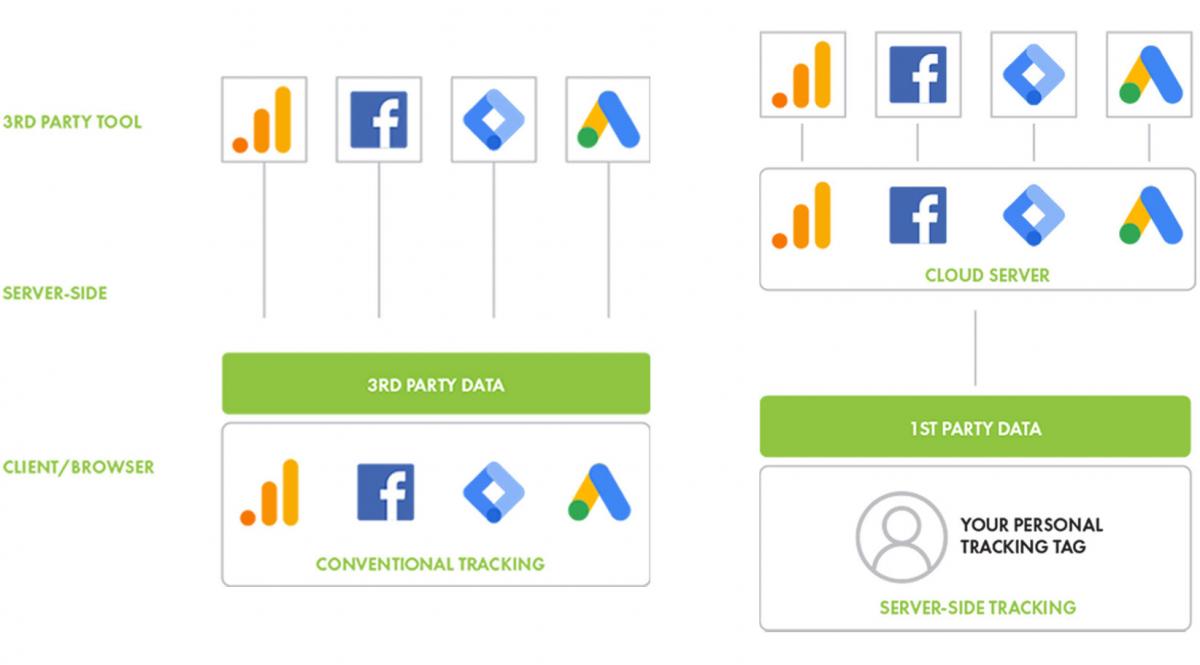


Data tracking is an important part of any digital marketing strategy. Businesses want to know what their customers are searching for so that they can cater their product or service to what their customers need. But with things like new HIPAA regulations, the elimination of third-party cookies, and general unease about data privacy, many companies and organizations are having to rethink how they gather and track customer data.
At McD Digital, we want to be at the forefront of these changes so that we can equip our clients with all the tools they need to continue being awesome. And after the announced changes to HIPAA regulations at the end of 2022, we knew that we needed to find a solution. That’s when we dove into server-side tracking.
The best way to understand server-side tracking is to understand how it’s different from client-side tracking. Client-side tracking has been the norm for data collection for decades. In this type of tracking, data is transmitted directly from a user’s browser or end device to a third-party server like Facebook or Google Analytics. Each third-party server uses tags or pixels on a website to collect the data, creating an individual data stream for every third-party server that is collecting data on the site.
Client-side tracking has its benefits. Most are free to use and the data they collect is thorough and helpful for your marketing strategy. Also, it’s been the norm for so long, it must be the best…right?
While it’s true that client-side tracking is comfortable and familiar, it is quickly becoming limited as customers and businesses are seeking more control of their data. This is where server-side tracking comes in.
Instead of having multiple streams of data going to multiple third-party tools, server-side tracking allows you to consolidate all those data streams and have that information sent to one server that you control. Not only does this clean up the potential mess of having multiple streams of data, all of that data is in your control until you decide to send it to a third party.
You simply build a single JavaScript code into your site that collects the user data and sends it to a tracking server. While it is on the tracking server, you can “clean it up”. If there is information about your customers that you want to protect (i.e., PHI for healthcare organizations), you have the chance to filter all of that out before sending it to a third party. Once you have filtered the data, you can forward it to a third-party tool like Google Analytics to get that ever-so-valuable tracking data, empowering you to continue catering your product or service to your valued customers.


Talk of adding code, controlling servers, and cleaning data can sound intimidating. You might be thinking this is a great solution, but you don’t have the time to go into the backend of your site and implement a new kind of tag management system.
That’s where we come in. Our team will partner with you to figure out the best method for securing your sensitive data and implementing server-side tag management onto your website. Whether it’s through our Digital Team here or companies like JENTIS, we want to provide you with all the tools you need to be successful. While there is cost associated with server-side tracking, we believe it will help you in the long run.
Whether you are in the healthcare world where HIPAA compliance is at the forefront or simply want to better protect your customers’ information, server-side tracking is an excellent opportunity to stay in control of the data while still being able to gather information relevant to improving the customer experience. Protect your business/organization and your customers by securing their data and ultimately improve the user experience on your site.
Questions? Call or email Jim Hover, McD Digital Website Project Manager at 309-346-6356 or jhover@mcdmarketing.com.
